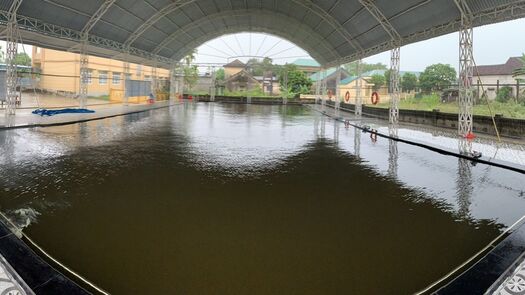November 3, 2025

Dr. Nguyen Ngoc Anh is the Chief Economist at the Development and Policies Research Center (DEPOCEN), where he leads research on critical socioeconomic issues, including public health policy and impact evaluation. Since 2023, the Global Health Advocacy Incubator (GHAI) has worked with DEPOCEN to assess the economic burden of child drowning in Viet Nam and to evaluate the effectiveness and financial sustainability of survival swimming programs.
1. From your perspective as an economist and public policy researcher, why should we prioritize child drowning prevention in Viet Nam, and what broader implications does it have for society and development?
Child drowning, claims approximately 2,000 young lives annually in Viet Nam, presenting a critical public health issue with deep economic dimensions. From an economic view, each fatality represents not only an irreversible loss of life but also a significant depletion of future human capital. Our research aims to quantify this multifaceted economic burden, encompassing direct costs like immediate family expenses and healthcare, lost parental productivity and the profound indirect cost of unrealized lifetime economic contributions.
Therefore, policy interventions focused on prevention, such as survival swimming programs, are not simply humanitarian responses; they represent strategic investments. Evaluating their cost-effectiveness and ensuring their financial sustainability are vital for optimizing resource allocation, mitigating substantial long-term economic losses and ultimately contributing to Viet Nam's broader socioeconomic development goals.
2. From a policy analysis perspective, what are the key aspects of the child drowning prevention program's strategic design and implementation in Viet Nam, particularly regarding its effectiveness and potential for long-term expansion?
I appreciate the program's comprehensive, evidence-based strategy. Key aspects important for effectiveness and expansion include, firstly, the targeted approach – focusing resources on the 12 high-risk provinces – maximizing impact efficiently and providing a model for expansion. Secondly, the multi-component strategy, combining practical swimming skills with water safety education, tackles the problem holistically. Crucially, this design enables us to generate vital evidence on effectiveness and cost-efficiency. This evidence is fundamental for building the case and designing financially sustainable models scalable nationwide.
3. What do you consider the main accomplishments of Viet Nam's child drowning prevention programs implemented so far?
A major accomplishment has been the successful implementation of large-scale training programs, like the GHAI-supported initiative, which has taught survival swimming and water safety to tens of thousands of children in high-risk areas. Critically, this demonstrates the practical feasibility of these interventions on the ground. Proving that these programs can be implemented effectively is essential foundational work. It provides the necessary evidence base for evaluating cost-effectiveness and designing the sustainable, larger-scale national strategies needed to meet Viet Nam's child injury prevention goals.
4. Were there any other drowning prevention investment case studies that DEPOCEN used to support this study?
While the general concept of analyzing the economic costs of child drowning is not entirely new, our comprehensive literature review on drowning prevention found no other investment case studies specifically addressing this area. Our research did, however, include a review of international literature concerning the economic burden of drowning, as well as accidents in general, which often uses the Human Capital approach [1]. Our work in Viet Nam breaks new ground by framing prevention as a critical investment. We specifically measured various cost components—including direct child-raising expenses and indirect lost future earnings—which, to our knowledge, is a novel comprehensive costing method for child drowning in this context.
5. What were the challenges and opportunities of developing a first of its kind study?
The primary challenge of our project lies in data sourcing; for instance, obtaining complete and consistent data in Viet Nam for specific elements like hospitalization costs, emergency services costs, and coronial costs related to drowning incidents is difficult. Making necessary long-term economic projections also requires careful methodology.
Overcoming these challenges allowed us to generate solid policy-relevant economic evidence for Viet Nam, demonstrating that prevention is a sound economic proposition. This evidence is crucial for developing sustainable public-private funding models, informing and strengthening our national strategy to reduce child drowning and contributing valuable lessons to other low- and middle-income countries facing similar public health challenges. Ultimately, it enhances our ability to advocate for decisive, long-term action based on solid economic reasoning.
6. Based on your economic and policy research, what is the key message you would want to share with leaders in Viet Nam and internationally about prioritizing and investing in child drowning prevention?
Investing strategically in child drowning prevention is essential for saving lives, and it also delivers significant economic benefits. Our research estimates the annual economic burden of child drowning in Viet Nam at approximately 617 million USD – a substantial figure reflecting lost potential and direct costs, which far exceeds the investment needed for proven preventive measures.
Therefore, we should view the program not as an expenditure, but as a critical investment in human capital. This requires prioritizing evidence-based interventions, strategically targeting resources, enhancing public awareness, strengthening safety infrastructure and committing to continuous monitoring and evaluation. Ultimately, decisive, long-term action protects children's lives and secures substantial economic benefits for society.
[1] “Estimating the Global Economic Cost of Drowning” (RNLI International, 2015) and “Calculating the Economic Burden of Fatal Drowning in Australia (2002–2017)”
Related News
View All NewsSeptember 10, 2025
Meet the Future of Domestic Budget Allocation for Health: The new Advocacy Accelerator Cohort
September 10, 2025



